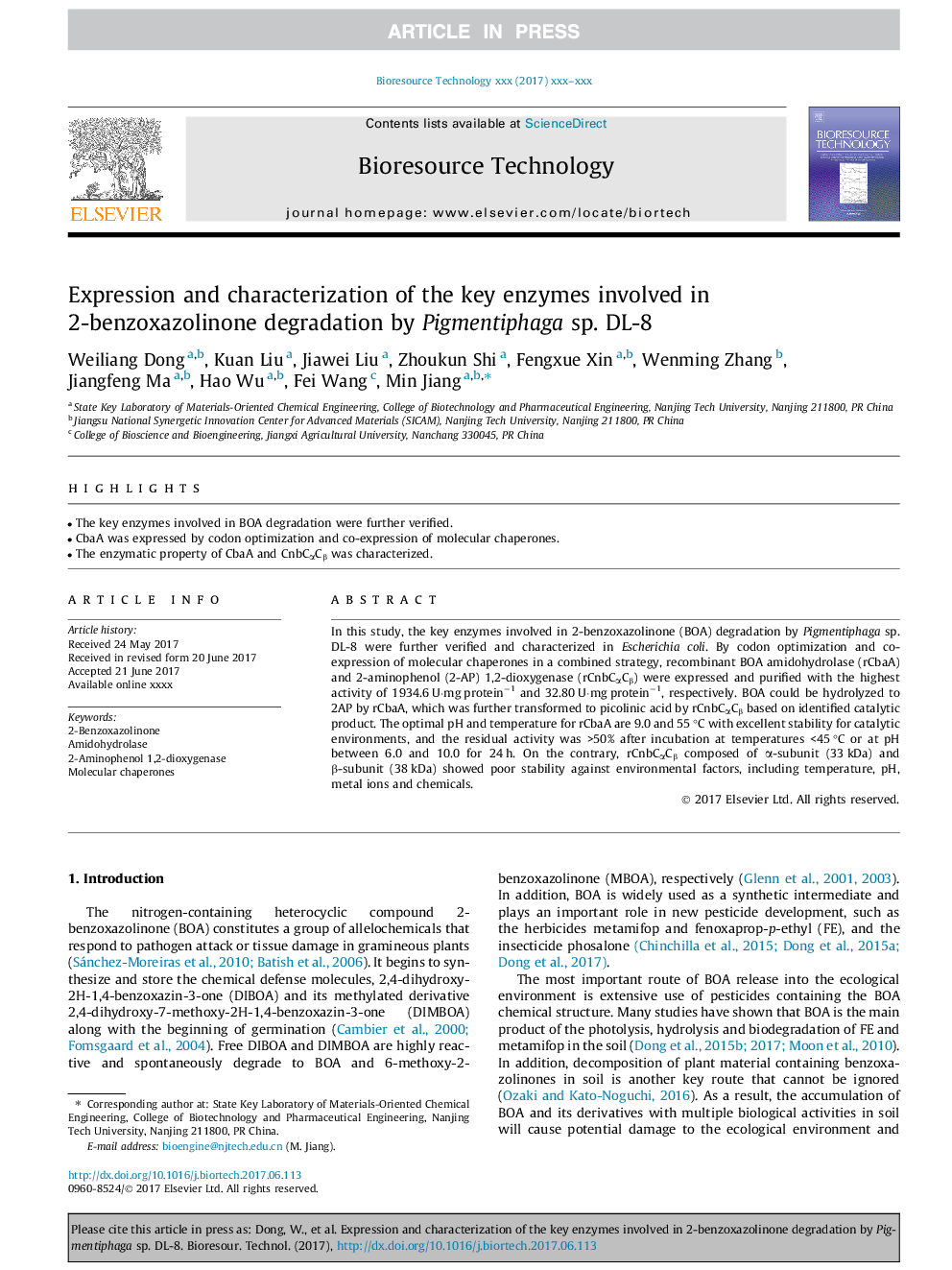| Article ID | Journal | Published Year | Pages | File Type |
|---|---|---|---|---|
| 7069146 | Bioresource Technology | 2018 | 7 Pages |
Abstract
In this study, the key enzymes involved in 2-benzoxazolinone (BOA) degradation by Pigmentiphaga sp. DL-8 were further verified and characterized in Escherichia coli. By codon optimization and co-expression of molecular chaperones in a combined strategy, recombinant BOA amidohydrolase (rCbaA) and 2-aminophenol (2-AP) 1,2-dioxygenase (rCnbCαCβ) were expressed and purified with the highest activity of 1934.6 U·mg proteinâ1 and 32.80 U·mg proteinâ1, respectively. BOA could be hydrolyzed to 2AP by rCbaA, which was further transformed to picolinic acid by rCnbCαCβ based on identified catalytic product. The optimal pH and temperature for rCbaA are 9.0 and 55 °C with excellent stability for catalytic environments, and the residual activity was >50% after incubation at temperatures <45 °C or at pH between 6.0 and 10.0 for 24 h. On the contrary, rCnbCαCβ composed of α-subunit (33 kDa) and β-subunit (38 kDa) showed poor stability against environmental factors, including temperature, pH, metal ions and chemicals.
Related Topics
Physical Sciences and Engineering
Chemical Engineering
Process Chemistry and Technology
Authors
Weiliang Dong, Kuan Liu, Jiawei Liu, Zhoukun Shi, Fengxue Xin, Wenming Zhang, Jiangfeng Ma, Hao Wu, Fei Wang, Min Jiang,
